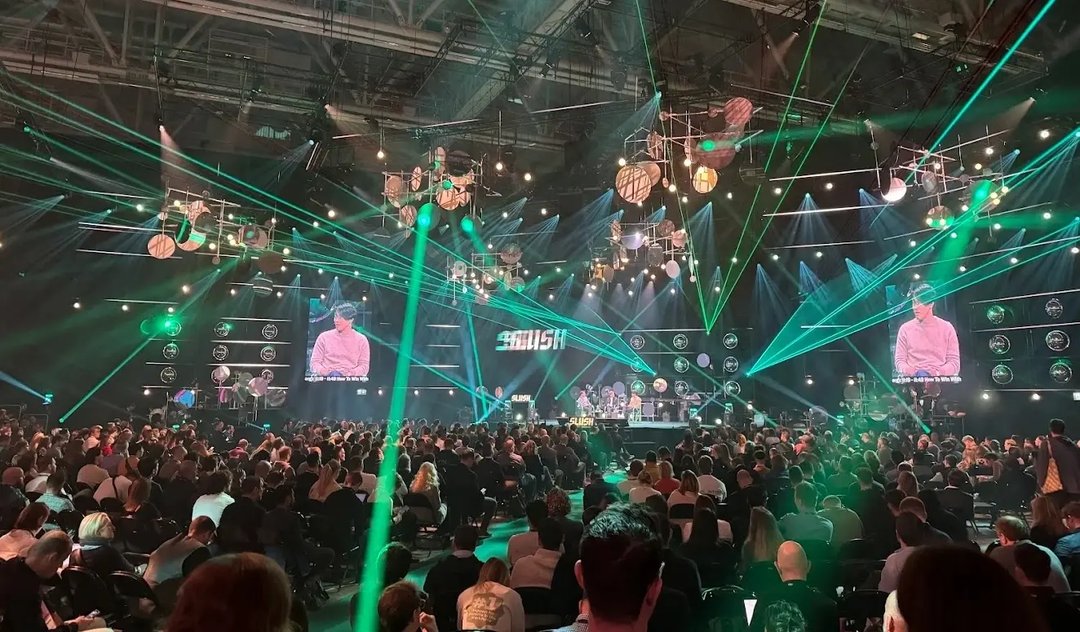
Sunscrapers Team
24 November 2022, 9 min read

What's inside
- Intro - what is a CMS?
- When do you need a CMS?
- What is a headless CMS?
- When to use headless CMS?
- Most popular headless CMSes and their features
- What to consider when choosing the best headless CMS?
- Summary
Intro - what is a CMS?
CMS is a content management system for a website that allows a user to create, edit or update content and information in an easy and friendly way without thorough IT knowledge. Adding, modifying, and removing texts, tables, graphics, photos, videos, and even entire subpages or departments is done solely by clicking a few buttons. The most popular CMS systems have add-ons called plugins which usually combine a set of accessories to assist in achieving different goals. That’s why such tools are highly self-sufficient and popular among various businesses. It is estimated that more than 60% of websites are built with their use!
In the article, we’ll focus on one of their types - a headless CMS - showing you when to use it and describing its most popular features.
When do you need a CMS?
First of all, as mentioned earlier, thanks to CMS, you can make changes to your website even if you don't know HTML. Let's be honest - not every copywriter or content manager can code. Thanks to the CMS configuration, you don't have to worry about it. The administration panels of content management systems are usually very easy to use and work intuitively. This allows anyone on your team to publish content seamlessly.
Secondly, a CMS system lets you quickly update your website or online store content. Today, when the circulation of information is so large and - above all - lightning fast, it is of particular importance. Using a CMS to edit and publish your content, you don't need to code, simplifying the process and reducing the time you need to do it.
Thirdly, a CMS allows many people to co-manage content. All you have to do is give them access to the administration panel, and it's all set - your team's work becomes much easier. This is useful, especially for sites that publish large amounts of content. The tasks can then be easily divided among several employees, which significantly streamlines the process.
What is a headless CMS?
A traditional CMS, such as WordPress, has a frontend part (head) that retrieves data from the database and displays it in templates, inside HTML tags, applying CSS styles and images and organizing the content by subpages. If you deprive the CMS of these frontend functionalities and leave only the content management part, and the API allows access to this content - we will get the headless CMS architecture. It makes a headless CMS a blend of content repository and API.
The traditional task of CMS systems was to manage the content displayed on the website. Currently, content is used in various channels: on the Internet, in native applications based on various operating systems, or in devices with the internet of things. The headless architecture allows these channels to be handled according to their requirements in isolation from the content management application, using the REST API provided by the headless CMS.
When to use headless CMS?
A headless CMS has many benefits, especially in terms of development work. Here are the main advantages of this solution.
Easy frontend creation
Using the API, you can publish content on any device and channel. In addition, developers can freely choose their favorite frameworks and tools that they want to use. For this reason, headless CMS differs from traditional solutions that impose restrictions on the technologies used when creating components.
Better possibilities for using API
Application programming interfaces (API) allow technologies to communicate with each other. Thus, it is possible to present content on various channels. But that's not all. Thanks to various APIs, you can collect data from numerous sources, send it to a CMS for analysis, and then send it back to many channels.
Separating content management from the site’s looks
People responsible for content management can make the necessary changes without interfering with the current appearance of the website. This function can be used in the case of complex projects, as content managers can fully perform their work as soon as the backend and the administration panel are pre-prepared.
Most popular headless CMSes and their features
Kontent by Kentico
- It's simple to understand and use, so you won't have to rely on software professionals to keep your website running.
- It can easily adapt to your company’s requirements, offering different optimizations.
- Its unique security approach allows you to define granular access rights for individual websites and applications in the administration interface to ensure greater security.
- It also provides comprehensive marketing and promotional solutions, from SEO to email marketing.
- It includes built-in design features that allow you to create a dynamic web experience on any platform.
- The system is highly scalable and helps in reallocating teams to focus on creating value through meaningful and engaging materials.
Sanity
- It lets you quickly set up your work environment, define content models, and validate fields using JavaScript.
- Its components are built based on React; it is with this library that you can customize and extend the functionality of the CMS depending on individual needs.
- It includes basic functionalities such as Structure Builder, Block Content, or the Dashboard plugin.
- It provides APIs that enable advanced work related to writing, reading, or correcting errors in the project.
- Applications built based on Sanity are characterized by high security and scalability.
- The tool is compatible with Gatsby, Jamstack, and Netlify. Due to its speed and flexibility, Sanity is gaining more and more popularity and has a large online community communicating on GitHub.
Strapi
- The administration panel and API can be easily customized.
- The tool is free and open-source - hundreds of people maintain a complete code base available on GitHub.
- It uses REST or GraphQL to apply API from any client (React, Vue, Angular), mobile applications, and IoT.
- It allows you to store your data on your servers safely. GDPR compliance is available as well.
- It enables the installation of the authentication system, content management, custom plugins, and other features in seconds.
- It helps protect your endpoints by granting or denying other people access to your API, depending on their role.
Agility CMS
- One of the oldest CMSes whose interface still feels a bit old-fashioned. However, it works pretty swiftly.
- It allows creating websites using Next.js, Gatsby, Nuxt.js, Eleventy, or starting with a customizable blank instance.
- It integrates smoothly with Next.js and Vercel in just a few clicks and minutes.
- It provides an advanced field configurator with standard and custom fields.
- The report tab shows a quick list of recent changes and is a convenient tool for a person who supervises the work of content editors.
Contentful
- The main advantage of Contentful is its independence - it enables the publication of content regardless of the presentation layer, including multilingual content, using an extensive text editor.
- Thanks to its modular structure, it allows for the self-structuring of content based on specific data types, dividing it into documents, images, or audio and video files.
- Its interface has been designed with both experienced and non-technical users in mind. In many cases, this means the possibility of publishing any content without interfering with the code.
- The infrastructure location in one place allows many programmers, designers, and editors to work simultaneously.
- It uses instant CDN (Content Delivery Networks), which enables speedy and smooth content delivery even in remote locations and with a high load.
Contentstack
- It works seamlessly and is highly user-friendly for experienced webmasters and new users who can make the necessary adjustments in no time.
- It allows easy collaboration between teammates.
- It separates the website’s functionalities from the CMS, letting you publish content on a variety of channels.
- With an extensive ecosystem of features, services, apps, and accelerators, it is possible to connect to various systems from leading industry technology and providers via the marketplace.
- It allows connections with different popular technologies and systems.
Bloomreach
- Based on Apache’s JackRabbit implementation means it’s compliant with Java Content Repository (JCR) specifications.
- It offers its own Apache Freemarker based templating engine that delivers content directly from the repository.
- It’s user-friendly, making everyday tasks easier to complete.
- It offers additional plugins which save time and money.
- It allows managing multiple websites with one platform.
Netlify
- It is based on JamStack technology and allows easy installation.
- Text editing has a lot of useful features with real-time previews as well as drag-and-drop media uploads.
- It provides an unlimited number of content types with custom fields.
- It enables modern authentication with GitHub, GitLab, JSON, Bitbucket, or its own Netlify Identity.
- It’s accessible to many content editors, even non-technical users.
What to consider when choosing the best headless CMS?
1. Support, onboarding, and documentation
The first thing to consider when comparing headless CMS options is the developer’s ecosystem - mainly the issue of having the documentation and all the necessary tools. The documentation should be descriptive enough and constantly updated, and the tools should include rich SDKs, libraries, demo source code, and more.
The second thing that needs to be checked is the activeness of the developer’s community in support forums and message boards, as well as the given CMS support team. If the response time is quick and the feedback is valuable, there’s a company that can be trusted.
2. Infrastructure
The infrastructure is equally important, i.e., how a particular CMS is built. It’s worth checking how it functions, provides features, and combines with your team’s workflow. The proper infrastructure makes the CMS fast, scalable, available, and secure.
3. API response time and other technical criteria
Your technical teams will appreciate it if you also consider things such as deployment options, data centers location, API response time, continuous integration, high-level customization, extensibility, and privacy.
Summary
Headless CMS has many advantages. It is an excellent solution for companies that have an organized structure of information presentation, know what they want to show on the web, and need to promote their products and content on various devices and in many channels.
However, it is also worth remembering the difficulties associated with such a solution’s choice - less flexibility for people filling the page with content and higher production costs. It is worth looking into the future and observing trends while choosing the right CMS. Headless CMS is not limited to technologies, so adapting the content to the prevailing standards is easier.
It is not a solution for every business, so if you could use a headless CMS in your work, it is better to get a professional consultation first.


